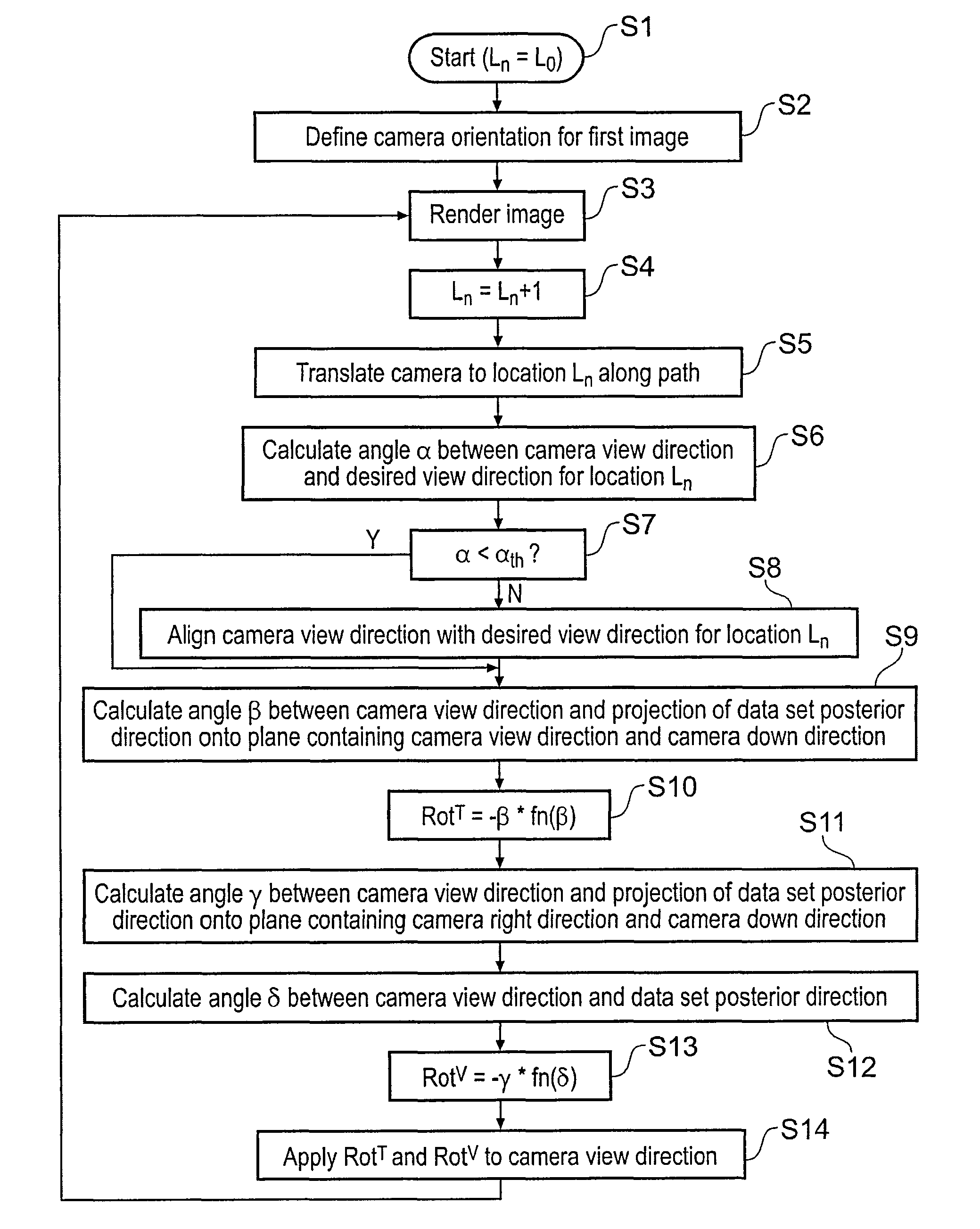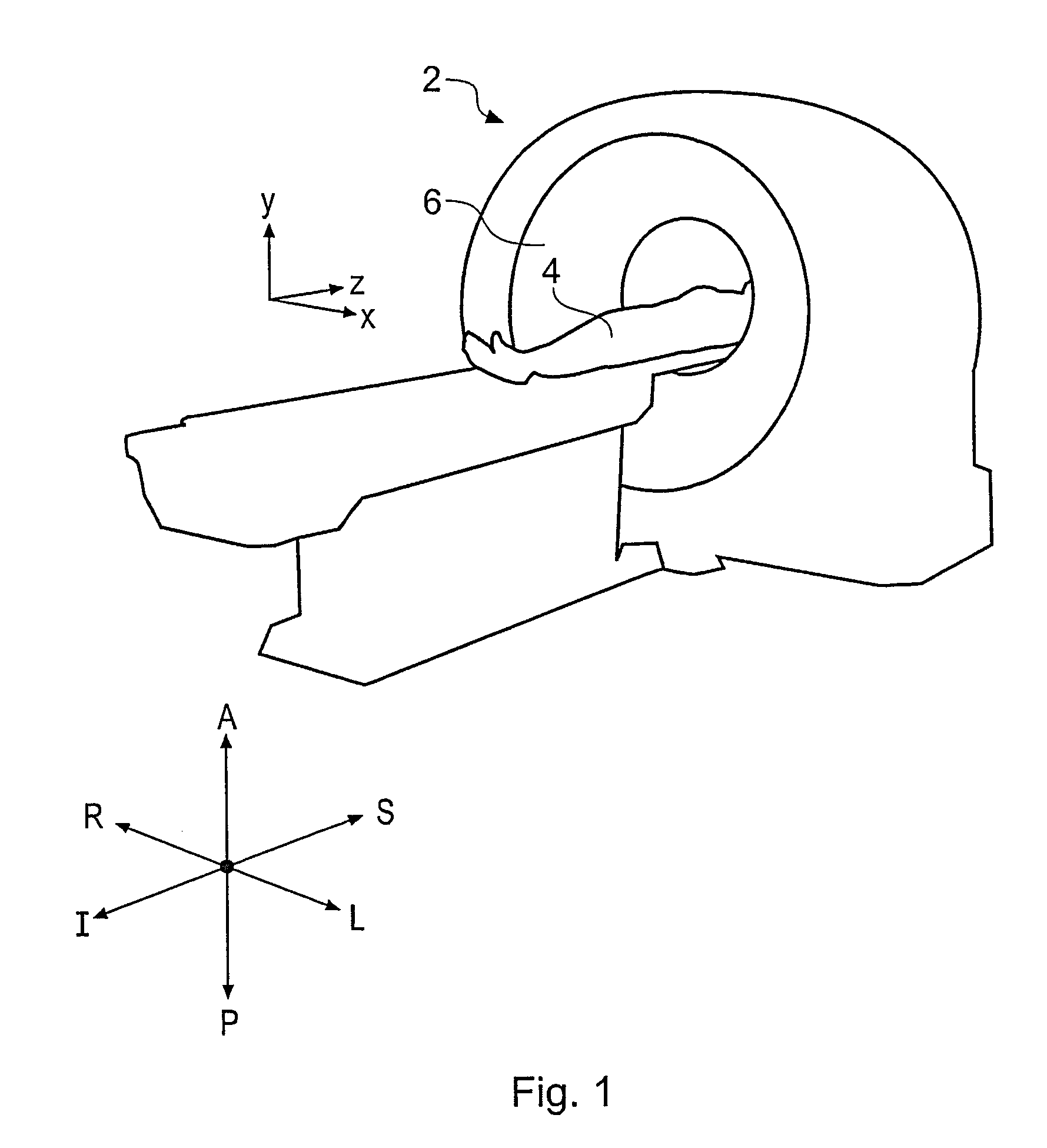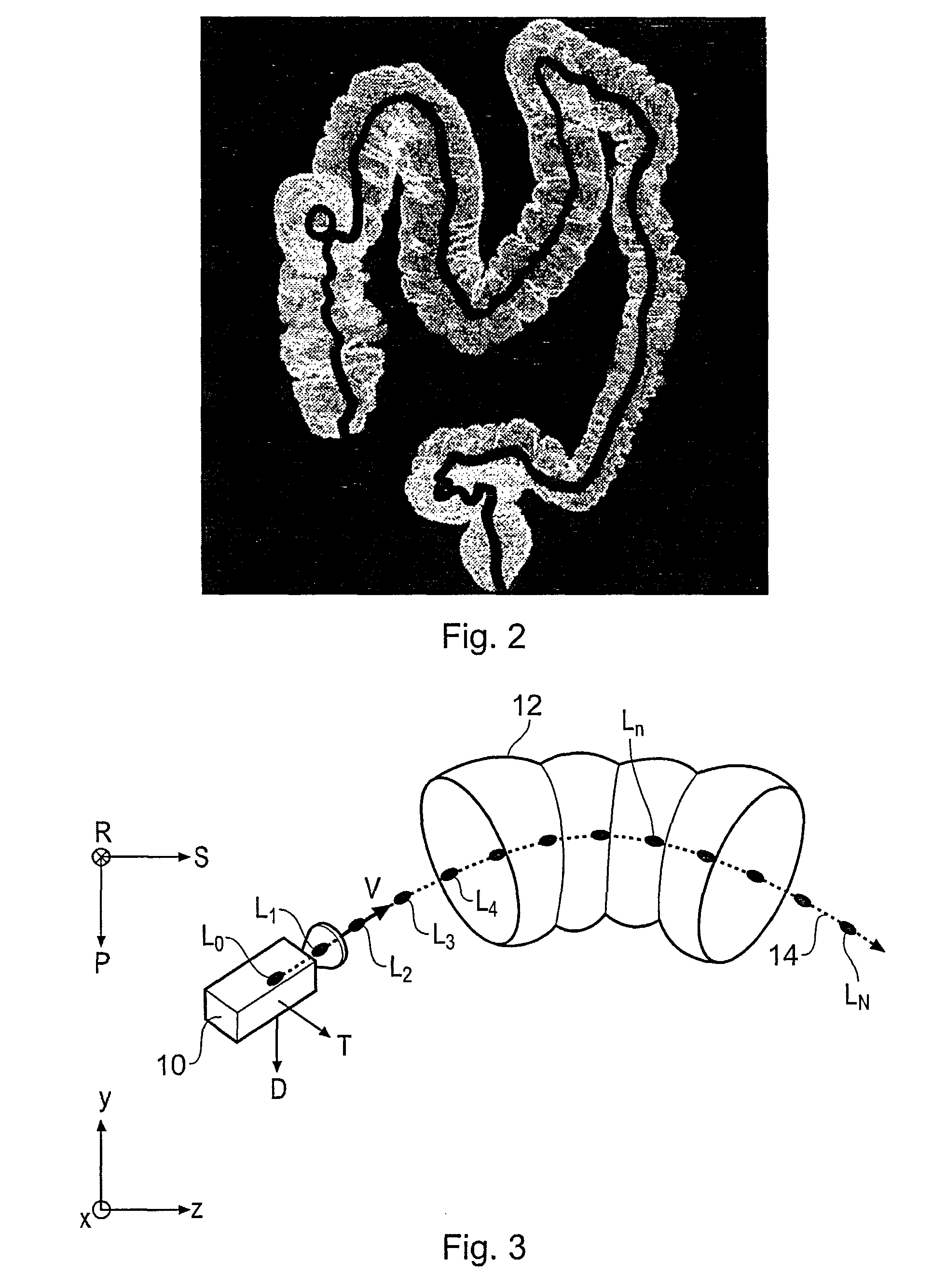Determining a viewpoint for navigating a virtual camera through a biological object with a lumen
a virtual camera and viewpoint technology, applied in the field of virtual endoscopy, can solve the problems of affecting the visual requiring heavy patient sedation, and affecting the image quality of the image, and achieve the effect of increasing the angle separation
- Summary
- Abstract
- Description
- Claims
- Application Information
AI Technical Summary
Benefits of technology
Problems solved by technology
Method used
Image
Examples
Embodiment Construction
[0051]Virtual endoscopy is often used in the study of the colon. In this context, virtual endoscopy is often referred to as virtual colonoscopy. Embodiments of the invention will hereafter be described by way of example in the specific context of virtual colonoscopy. However, it will be understood that embodiments of the invention may equally be employed in other applications of virtual endoscopy, for example in virtual angiography, virtual bronchoscopy, and also in computer simulated flythroughs of biological structures which are not normally the subject of conventional endoscopy procedures.
[0052]FIG. 1 is a schematic perspective view of a generic x-ray CT scanner 2 for obtaining a three-dimensional (3D) scan of a patient 4 to provide data suitable for virtual colonoscopy according to an embodiment of the invention. The patient's abdominal region is placed within a circular opening 6 of the CT scanner 2 and a series of x-ray images are taken from directions around the patient. The ...
PUM
 Login to View More
Login to View More Abstract
Description
Claims
Application Information
 Login to View More
Login to View More - R&D
- Intellectual Property
- Life Sciences
- Materials
- Tech Scout
- Unparalleled Data Quality
- Higher Quality Content
- 60% Fewer Hallucinations
Browse by: Latest US Patents, China's latest patents, Technical Efficacy Thesaurus, Application Domain, Technology Topic, Popular Technical Reports.
© 2025 PatSnap. All rights reserved.Legal|Privacy policy|Modern Slavery Act Transparency Statement|Sitemap|About US| Contact US: help@patsnap.com



